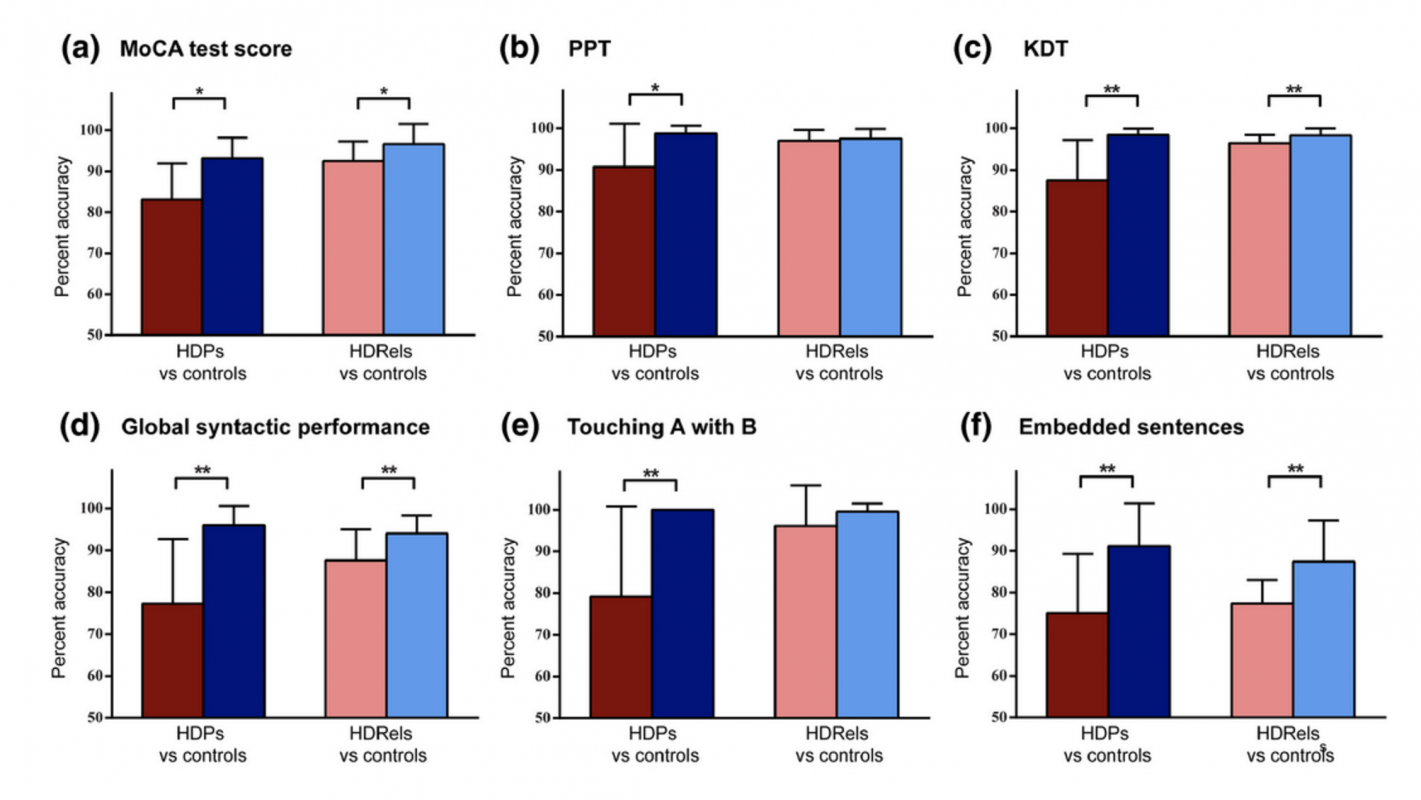Abstract: Frontostriatal networks play critical roles in grounding action semantics and syntactic skills. Indeed, their atrophy distinctively disrupts both domains, as observed in patients with Huntington’s disease (HD) and Parkinson’s disease, even during early disease stages. However, frontostriatal degeneration in these conditions may begin up to 15 years before the onset of clinical symptoms, opening avenues for pre-clinical detection via sensitive tasks. Such a mission is particularly critical in HD, given that patients’ children have 50% chances of inheriting the disease. Against this background, we assessed whether deficits in the above-mentioned domains emerge in subjects at risk to develop HD. We administered tasks tapping action semantics, object semantics, and two forms of syntactic processing to 18 patients with HD, 19 asymptomatic first-degree relatives, and sociodemographically matched controls for each group. The patients evinced significant deficits in all tasks, but only those in the two target domains were independent of overall cognitive state. More crucially, relative to controls, the asymptomatic relatives were selectively impaired in action semantics and in the more complex syntactic task, with both patterns emerging irrespective of the subjects’ overall cognitive state. Our findings highlight the relevance of these dysfunctions as potential prodromal biomarkers of HD. Moreover, they offer theoretical insights into the differential contributions of frontostriatal hubs to both domains while paving the way for innovations in diagnostic procedures.
Keywords: Huntington’s disease; action semantics; asymptomatic first-degree relatives; pre-clinical detection; syntax


